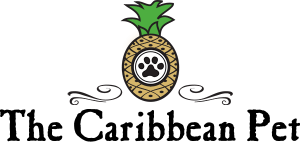- Language: English
- Currency: Eastern Caribbean dollar
- Temperature: Average 72-76°F winter, 74-84°F summer
- Square Miles: 68 Approx.
- Population: 44,000
ABOUT. St Kitts and Nevis are islands in the Lesser Antilles chain and the capital is Basseterre. Both islands are often described shaped like a baseball bat and ball. “St Kitts” is short for St Christopher, the name Christopher Columbus gave the island when he discovered St Kitts in 1493. From a distance, Columbus thought the island resembled the shape of St. Christopher carrying the Christ child on his shoulder. It was only later that it was affectionately nicknamed St Kitts. Columbus named its sister island Nevis because he thought the clouds surrounding its peak looked like snow. Its original name was Nuestra Senora de las Nieves (Our Lady of the Snows).
The early Columbian Carib inhabitants referred to St. Kitts as Liamuiga, or “fertile land,” a reference to St. Kitts rich and productive volcanic soil. Today that name describes St. Kitts’ central peak, a 3,792-foot extinct volcano. History claims that Sir Thomas Warner, an Englishman, brought his family, along with fourteen others, to an island inhabited only by native peoples. They arrived at what is now Sandy Point. Less than two years later Pierre Belain d’Esnambue led a small group of French settlers to the island. An eruption of violence ensued and wiped out the entire native population of Arawaks and Caribs. This massacre happened where Bloody Point is known as today.
As one of the earliest colonies and the closest to Britain from a nautical base, St Kitts & Nevis created a model for the lucrative plantation system based on sugar and slavery. From about 1623 on, the English and French expanded the economy with sugar and tobacco plantations and brought in African people as slaves. The British defeated the French for control of the two islands in 1783, and the old Brimstone Hill Fortress, an English fort built in 1690, remains on St Kitts today. The islands have a lush and tropical environment and rich with an abundance of exotic bird species and monkeys. Some say there are more monkeys on St Kitts than people! The Green Vervet monkeys which were brought here by the French as pets and remain active all over the island today.
One of the most cherished cultural traditions is the carnival at Christmas time when many islanders parade in a joyous display of island pride. Masquerade is an art form in St. Kitts. Paraders wear tall peacock-feathered headdresses, masks, and fringed aprons that reach just above the knees. The entire costume is decorated with bangles, mirrors and ribbons. Culture extends into the influence upon dance which include “Wild Mas”, the Waltz, Quadrille, the Rhumba, the Fertility Dance, the Fine Dance, the Jig and the Boillola. The “Quadrille”, which has its roots in 17th-Century France is a slow, structured couples dance. The second dance, the “Fine” demands greater skill and is quicker as the dancers move towards one another. During the “Wild Mas”, the dancers throw tomahawks into the air and is a typical African war dance. The other forms of dance combine African and European influence. Once a year African mythology comes to life through colorful gowns and vibrant performances as the Moko-Jumbies dance on six to eight foot stilts to entertain every age along the parade route. The parish of St. Peters started a tradition in which “The Actors” of St. Peters perform skillful, mesmerizing acrobatic feats. For hundreds of years Clowns have been a big part of the Christmas time festival. Clowns wear colorful costumes decorated with tiny bells that jingle.
Today Kittitians are a magical blend of history, culture, and pride for their island. St. Kitts considers itself a place of brother and sisterhood. The island’s values are based on mutual respect and appreciation for an abundance of natural treasures. There is not even a single traffic light. Rather it is an island comprised of residents intent on preserving the beauty of our land.

